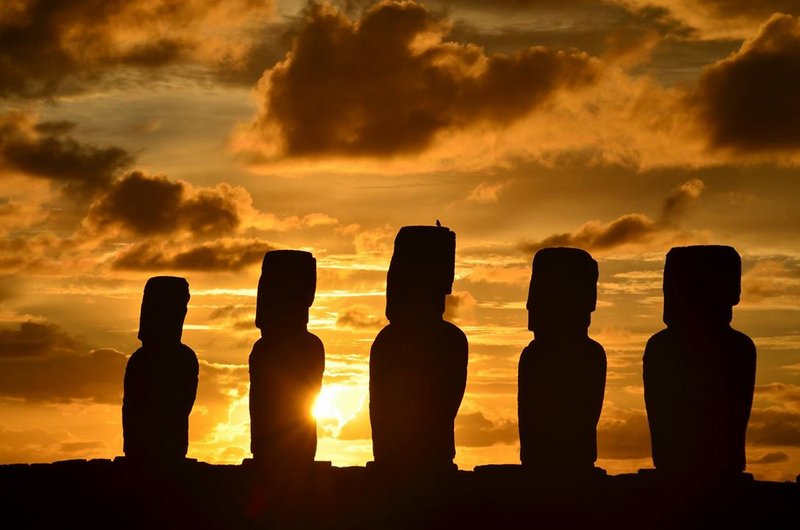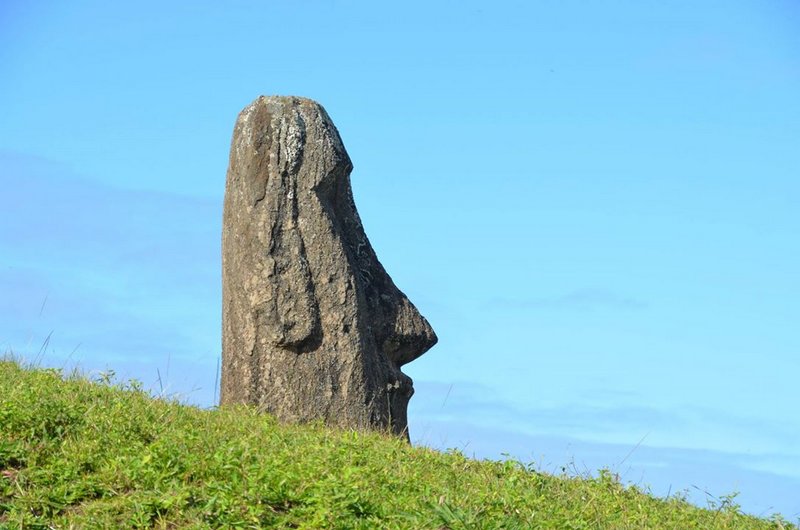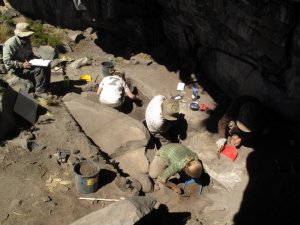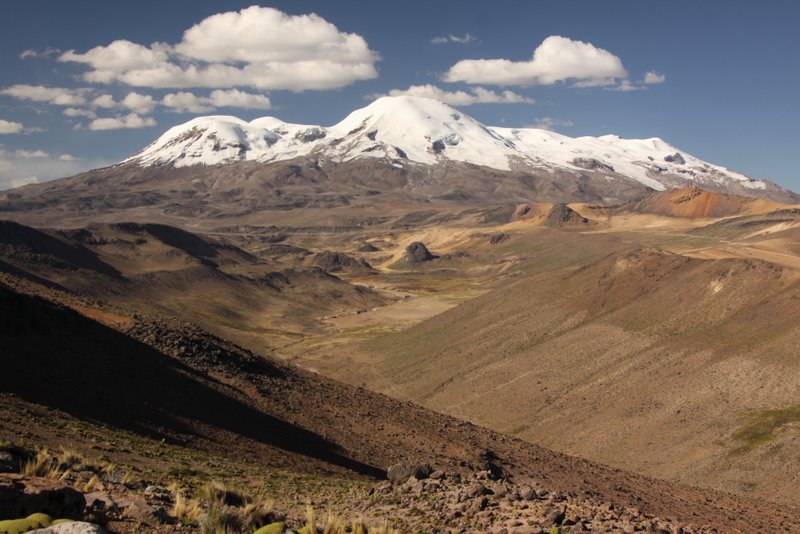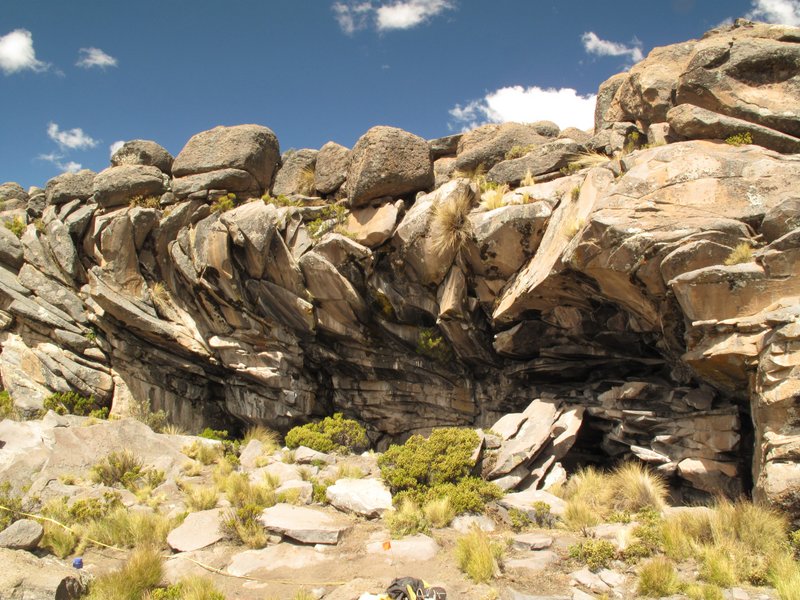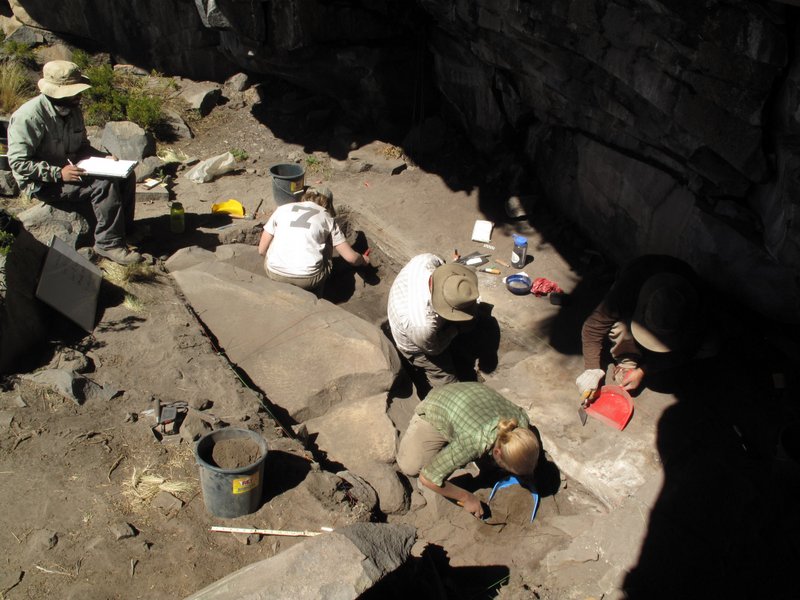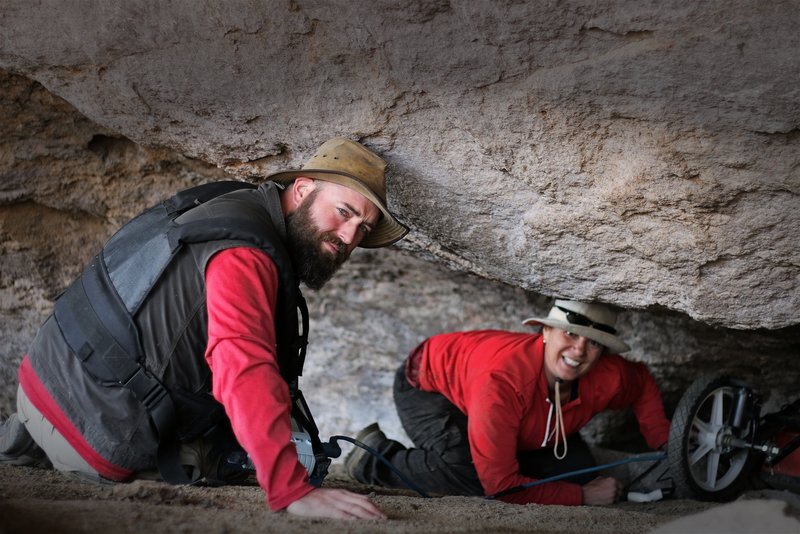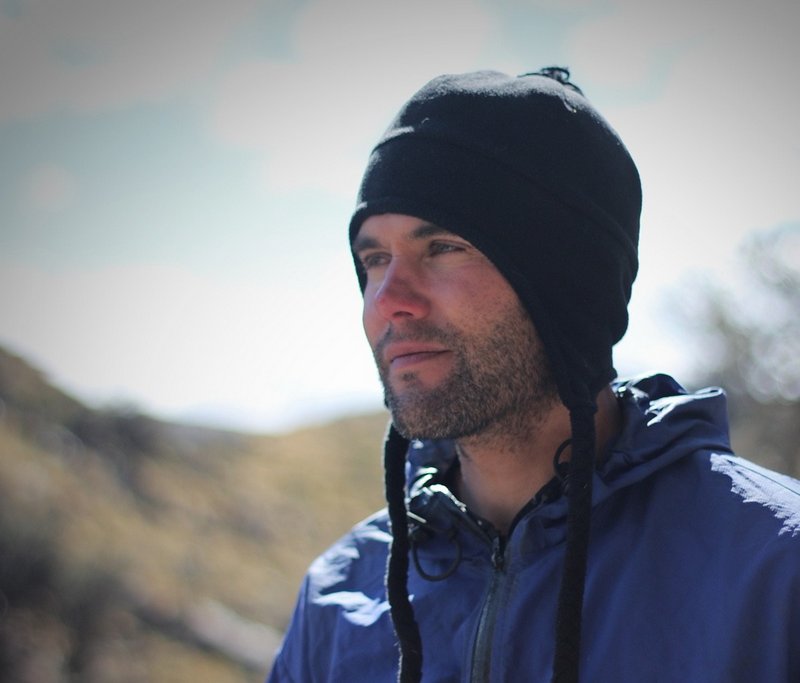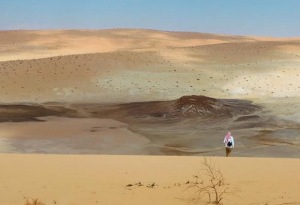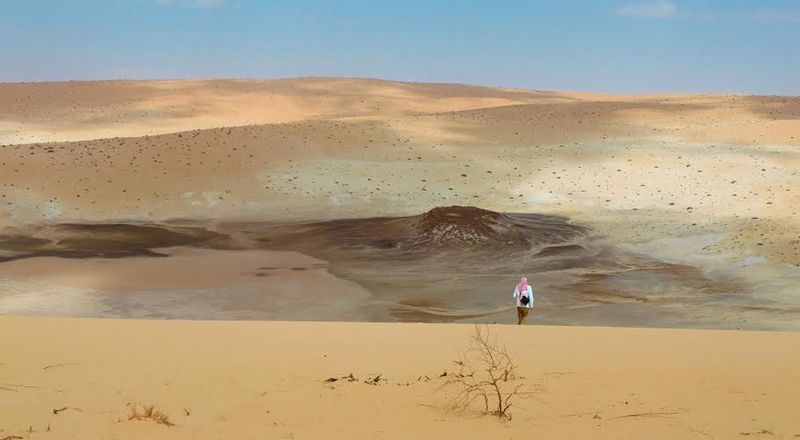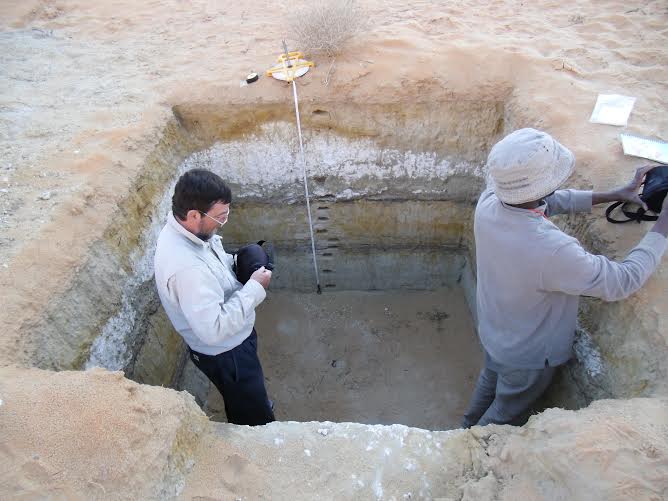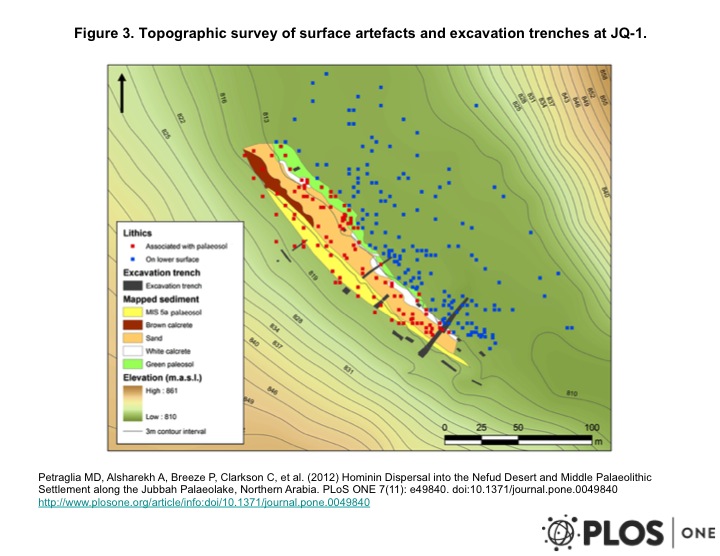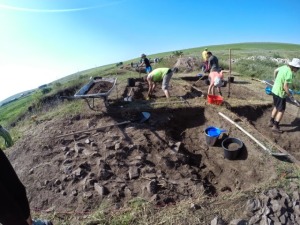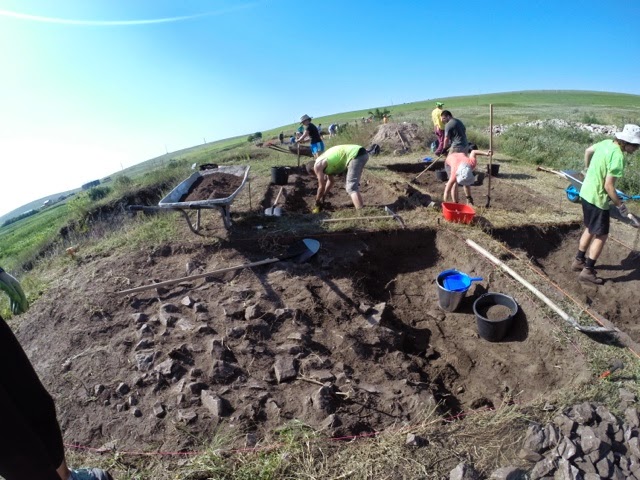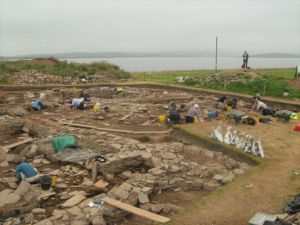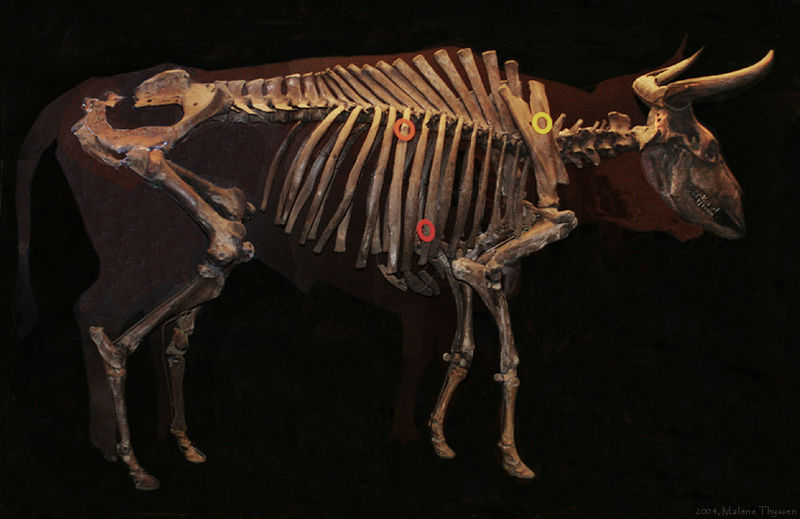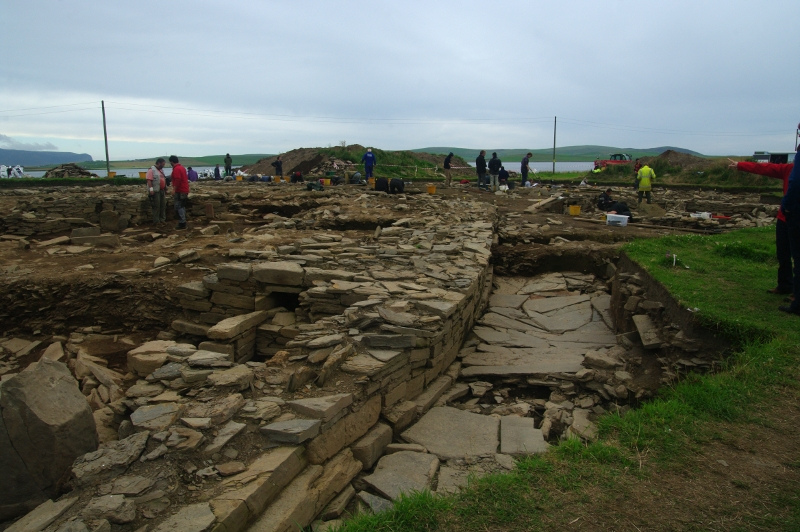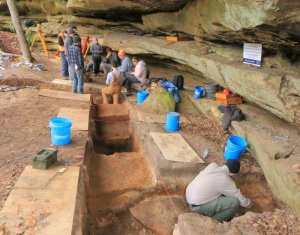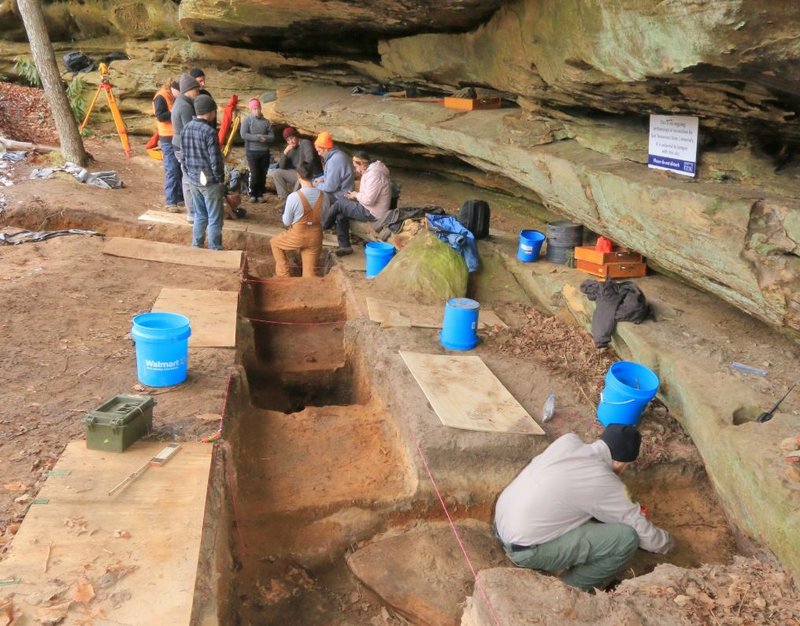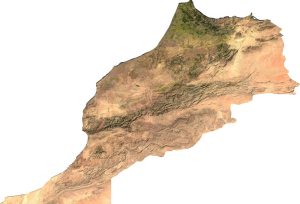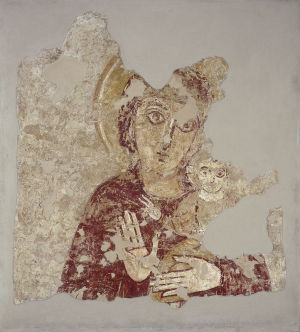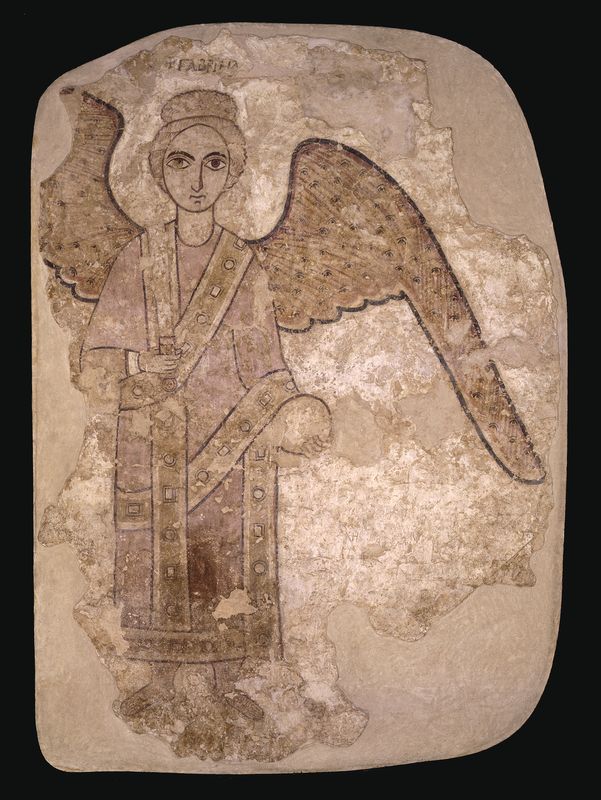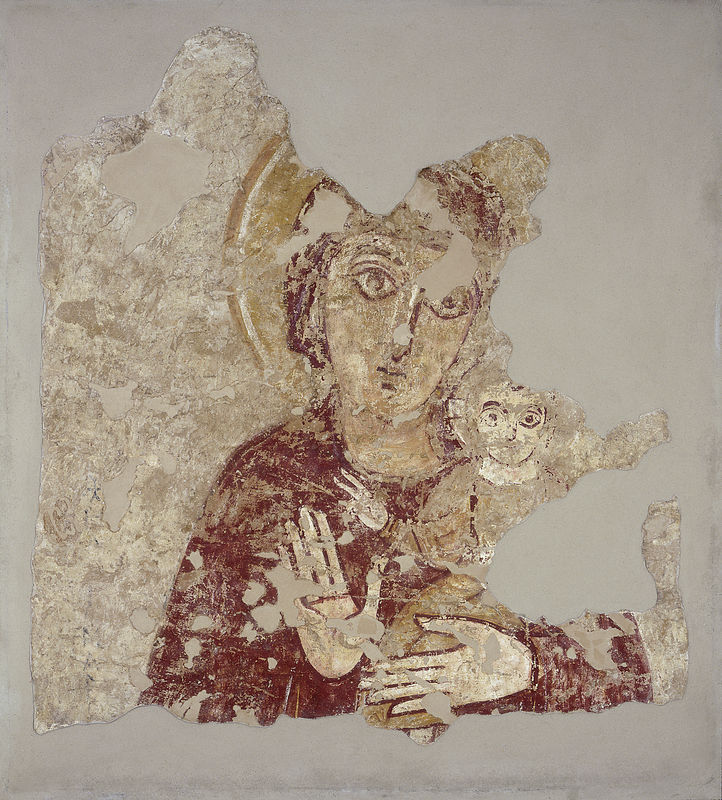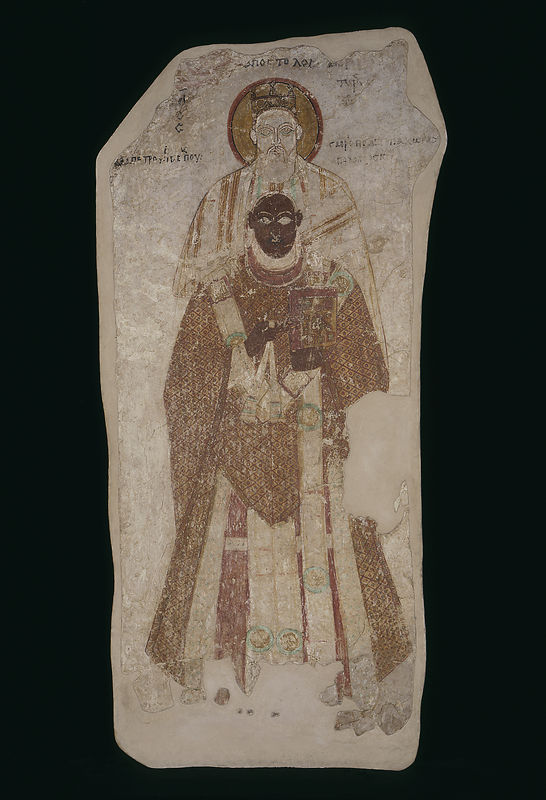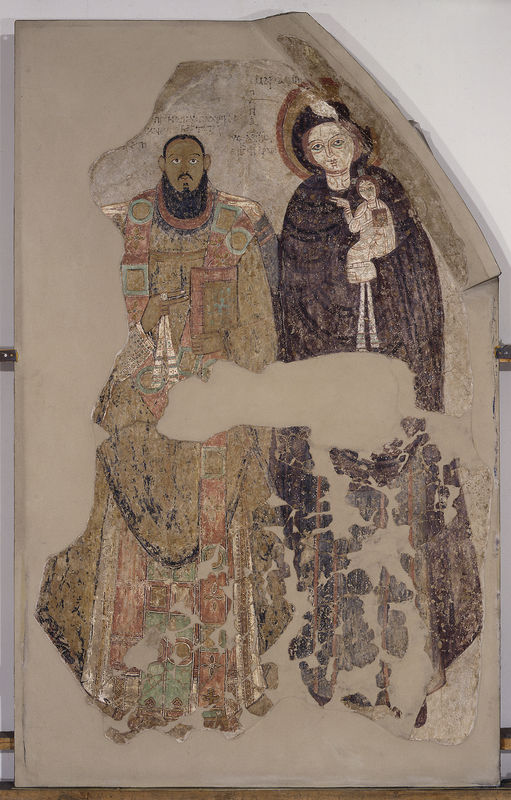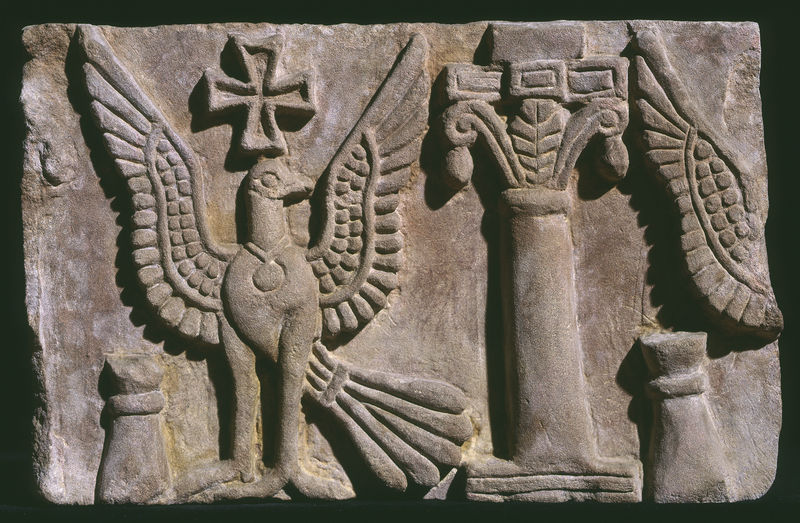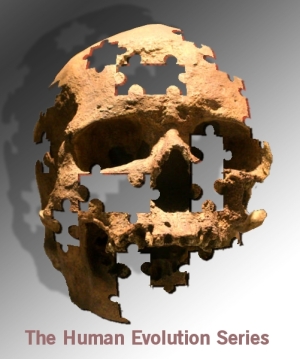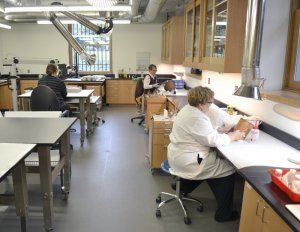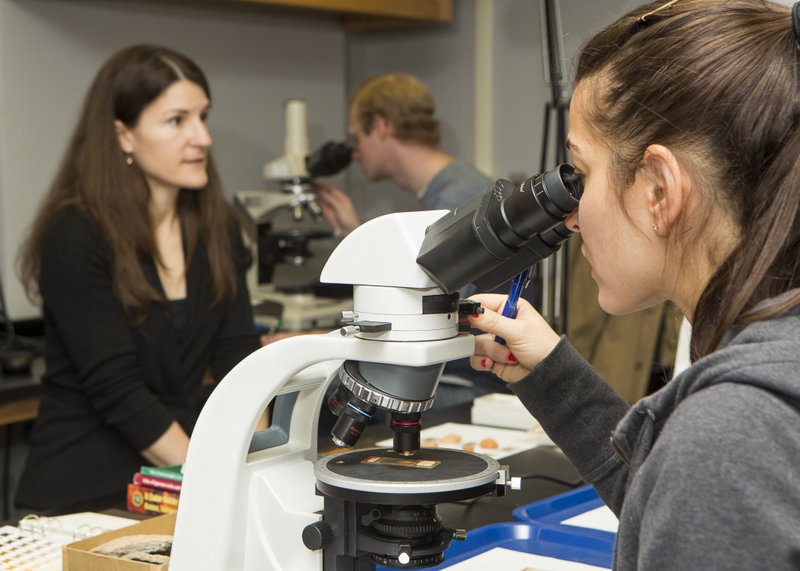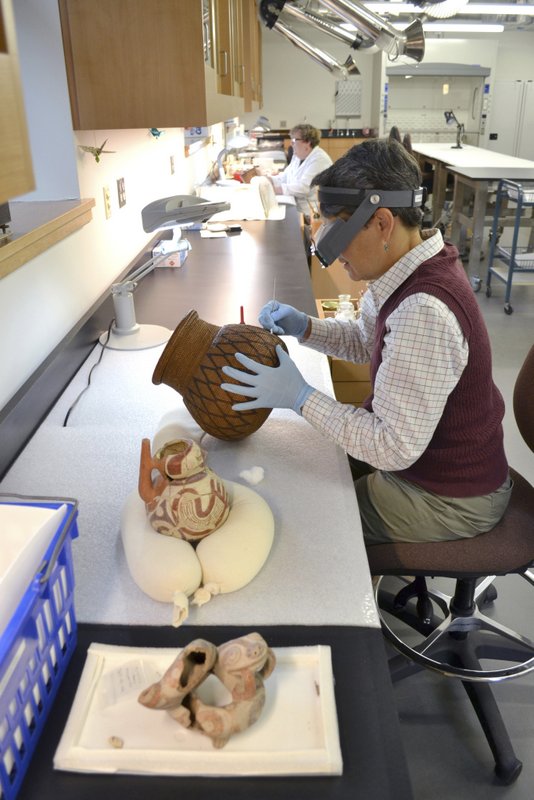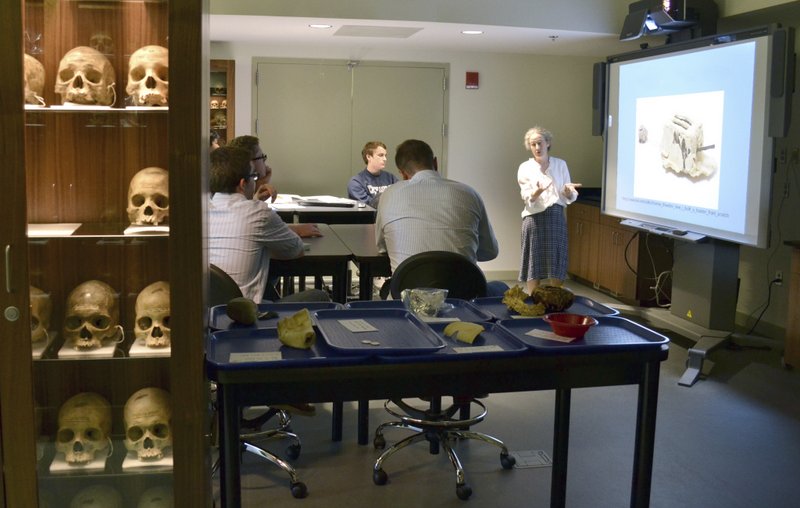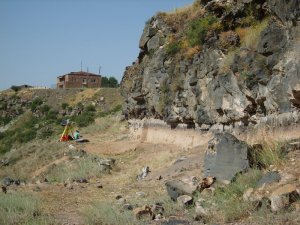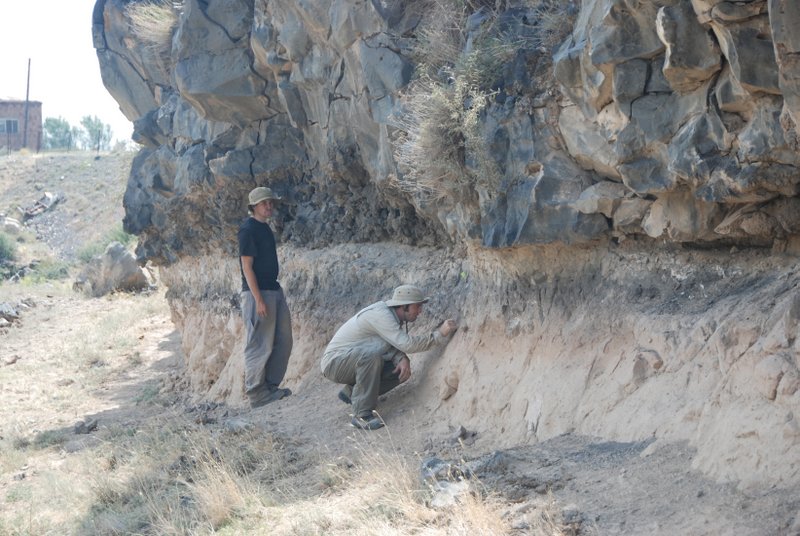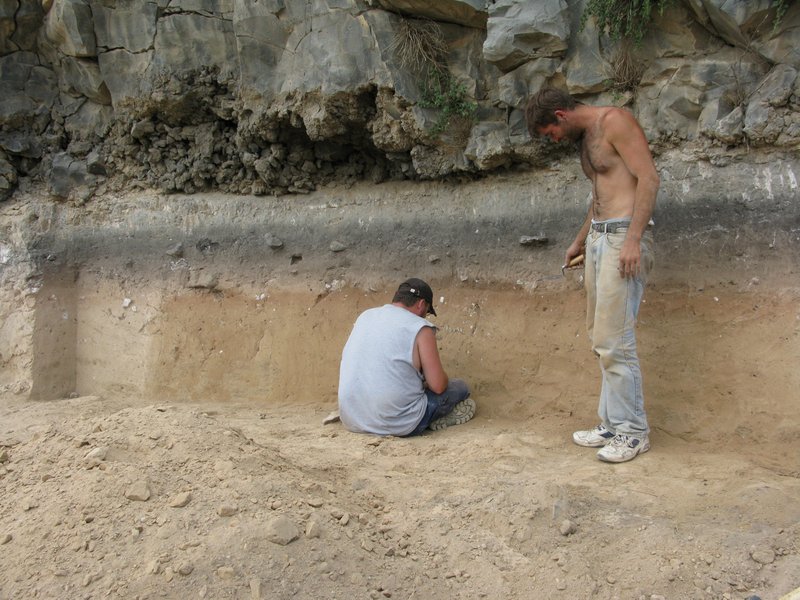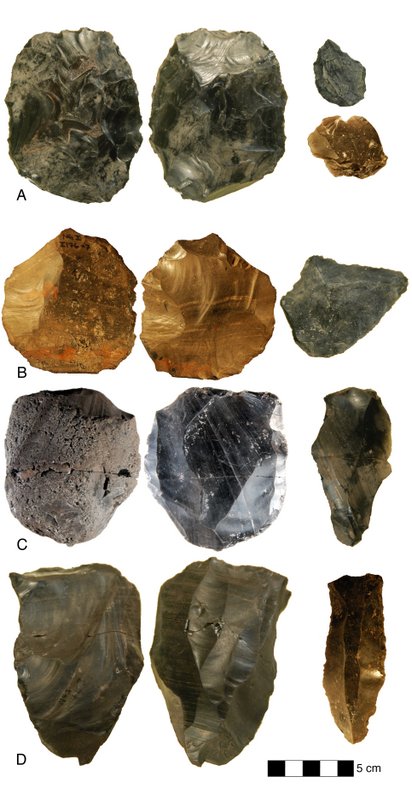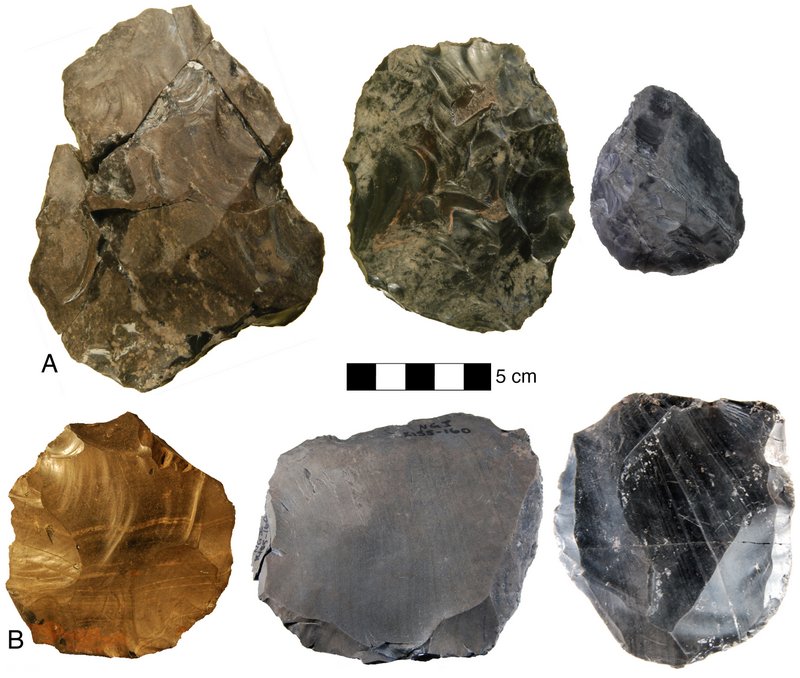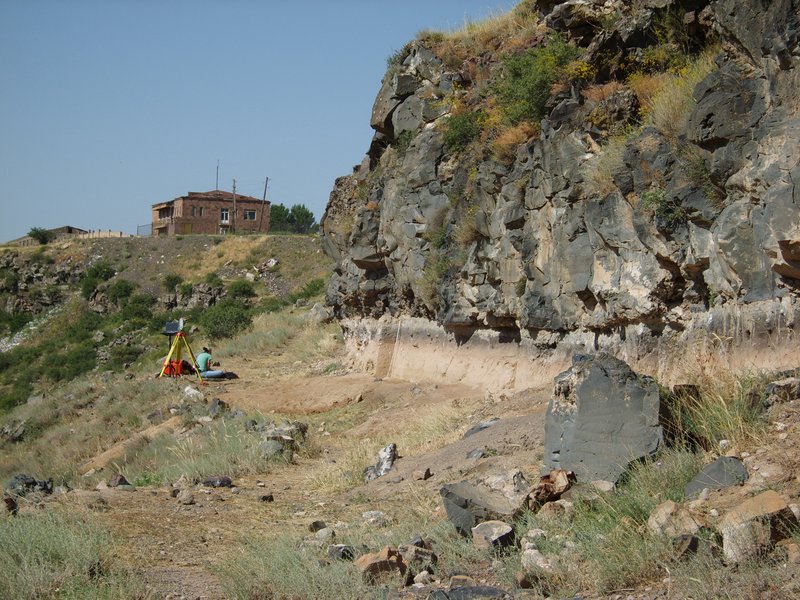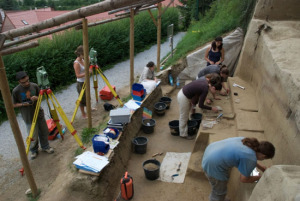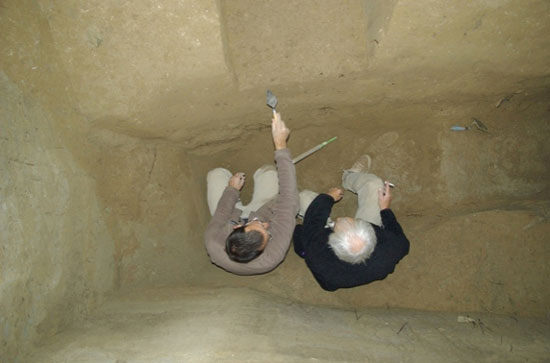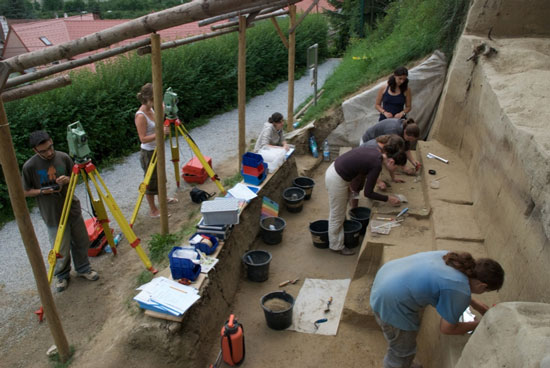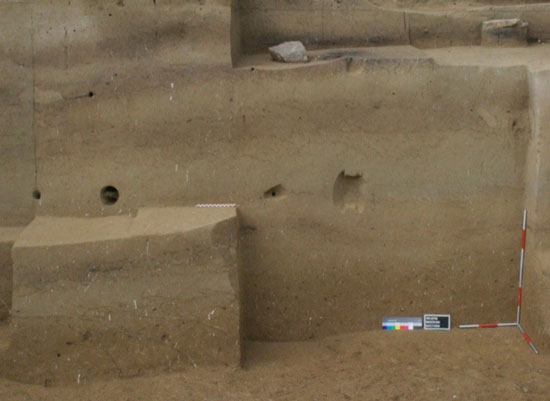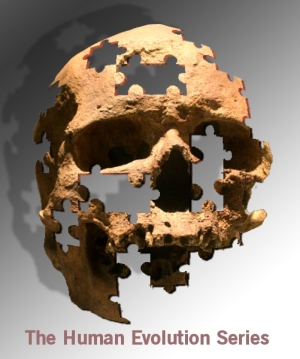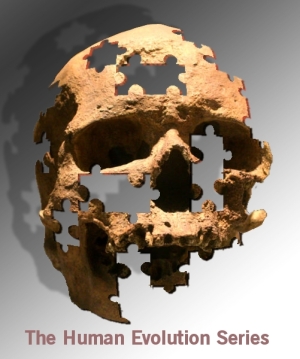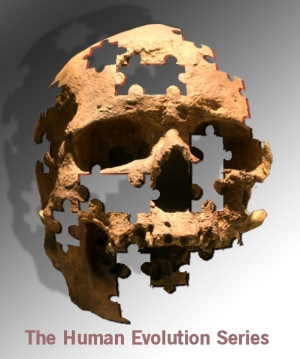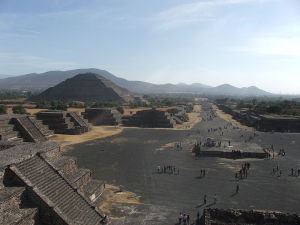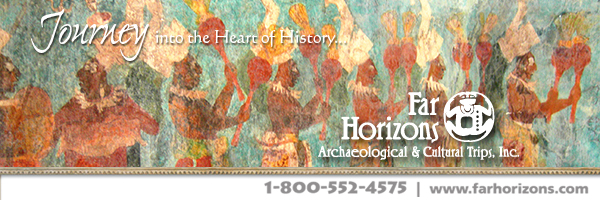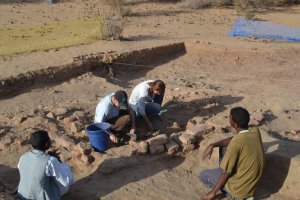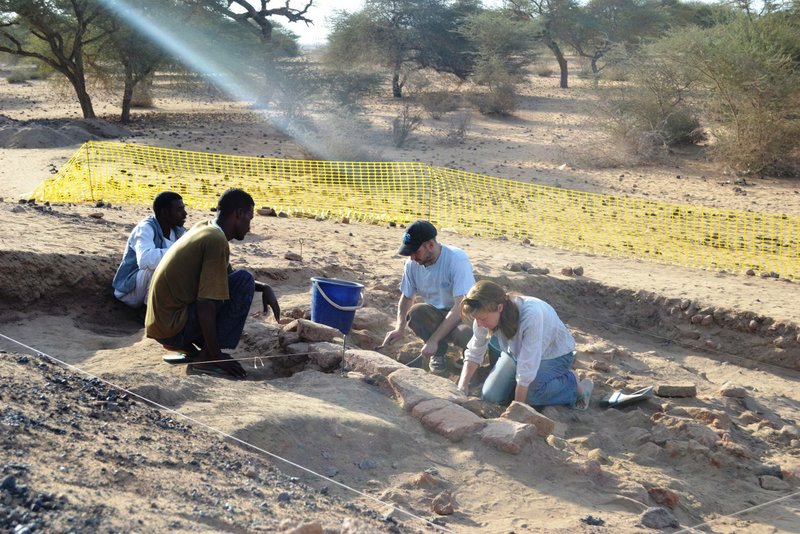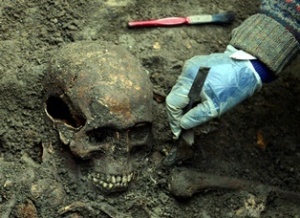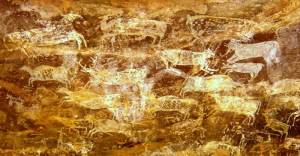
During a meeting of the Acoustical Society of America in Indianapolis October 27 – 31, 2014, Steven J. Waller of Rock Art Acoustics describes how prehistoric people may have interpreted sound phenomena as supernatural occurrences, and then reflected them in their culture as depicted on cave walls and in stone architecture.*
“Ancient mythology explained echoes from the mouths of caves as replies from spirits, so our ancestors may have made cave paintings in response to these echoes and their belief that echo spirits inhabited rocky places such as caves or canyons,” explains Waller.
Just as light reflection gives an illusion of seeing yourself duplicated in a mirror, sound waves reflecting off a surface are mathematically identical to sound waves emanating from a virtual sound source behind a reflecting plane such as a large cliff face. “This can result in an auditory illusion of somebody answering you from within the rock,” Waller says.
Echoes of clapping can sound similar to hoof beats, as Waller points out, while multiple echoes within a cavern can blur together into a thunderous reverberation that mimics the sound of a herd of stampeding hoofed animals.
“Many ancient cultures attributed thunder in the sky to ‘hoofed thunder gods,’ so it makes sense that the reverberation within the caves was interpreted as thunder and inspired paintings of those same hoofed thunder gods on cave walls,” says Waller. “This theory is supported by acoustic measurements, which show statistically significant correspondence between the rock art sites and locations with the strongest sound reflection.”
____________________________________
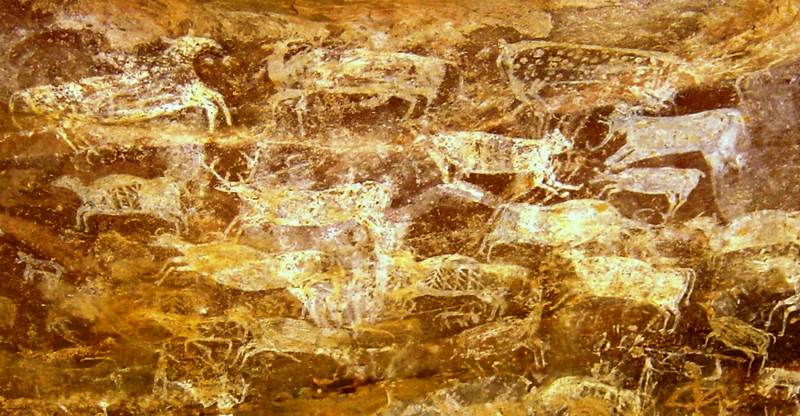 Prehistoric paintings of hoofed animals in a cave with thunderous reverberations, located in Bhimbetka, India. Courtesy S. Waller
Prehistoric paintings of hoofed animals in a cave with thunderous reverberations, located in Bhimbetka, India. Courtesy S. Waller
____________________________________
Other acoustical characteristics may have also been misinterpreted by ancient cultures unaware of sound wave theory. Waller noticed a resemblance between an interference pattern and Stonehenge, so he set up an interference pattern in an open field with just two flutes “droning the same note” to explore what it would sound like.
“The quiet regions of destructive sound wave cancellation, in which the high pressure from one flute cancelled the low pressure from the other flute, gave blindfolded subjects the illusion of a giant ring of rocks or ‘pillars’ casting acoustic shadows,” Waller says.
He traveled to England and demonstrated that Stonehenge does indeed radiate acoustic shadows that recreate the same pattern as interference. “My theory that musical interference patterns served as blueprints for megalithic stone circles—many of which are called Pipers’ Stones—is supported by ancient legends of two magic pipers who enticed maidens to dance in a circle and turned them all into stones,” he notes.
____________________________________
 Stonehenge Julie Anne Workman, Wikimedia Commons
Stonehenge Julie Anne Workman, Wikimedia Commons
____________________________________
There are several important implications of Waller’s research. Perhaps most significantly, it demonstrates that acoustical phenomena were culturally significant to early humans—leading to the immediate conclusion that the natural soundscapes of archaeological sites should be preserved in their natural state for further study and greater appreciation.
Waller’s observations and conclusions are among a number of other research findings by other scientists exploring this phenomena. Beginning in 2008, a recent and ongoing study of the massive 6,000-year-old stone structure complex known as the Hal Saflieni Hypogeum on the island of Malta, for example, has produced some revelatory results. Like its related prehistoric temple structures on Malta, this structure features central corridors and curved chambers. But this structure is unique in that it is subterranean, created through the removal of an estimated 2,000 tons of stone carved out with stone hammers and antler picks. Low voices within its walls create eerie, reverberating echoes, and a sound made or words spoken in certain places can be clearly heard throughout all of its three levels. Some scientists have suggested, based on research experimentation, that certain sound vibration frequencies created when sound is emitted within its walls may have actually altered human brain functions of those within earshot.
_____________________________________
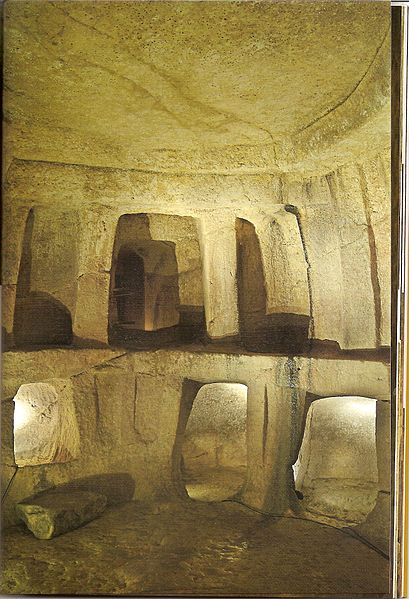 Interior view of the Hal Saflieni Hypogeum. Помещенеи гипогея, Wikimedia Commons
Interior view of the Hal Saflieni Hypogeum. Помещенеи гипогея, Wikimedia Commons
______________________________________
But the Hypogeum is not alone in its peculiar sound effects. A study conducted in 1994 by a consortium from Princeton University found that acoustic behavior in ancient chambers at megalithic sites such as Newgrange in Ireland and Wayland’s Smithy in England was characterized by a strong sustained resonance, or “standing wave” in a frequency range between 90 Hz and 120 Hz. “When this happens,” says Linda Eneix, President of the Old Temples Study Foundation, “what we hear becomes distorted, eerie. The exact pitch for this behavior varies with the dimensions of the room and the quality of the stone.” Going further back in time, she points to the ancient 10,000 B.C. site of Göbekli Tepe in southern Turkey. Built by hunter-gatherers, the site is thought by many scientists to be located in the area transitional to the first development of agriculture and domesticated livestock. Located on a hilltop, it consists of 20 round stone-built structures which had been buried. Excavation has revealed massive, T-shaped standing limestone pillars. “In the center of a circular shrine,” she says, “a limestone pillar “sings” when smacked with the flat of the hand. Obviously made to represent a human with a decorated belt and hands carved in relief at its waist, it bears unexplained symbols in the area of the throat.”
______________________________________
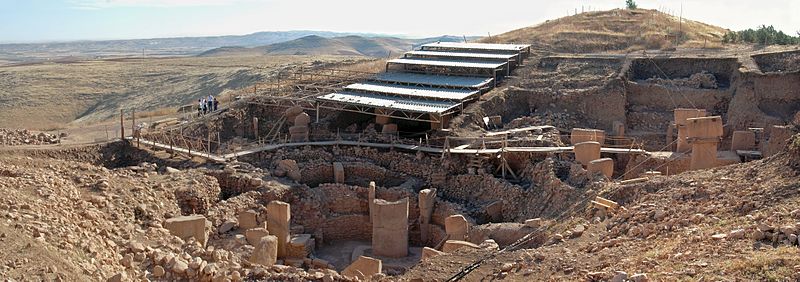 Panoramic view of Göbekli Tepe Rolf Cosar, Wikimedia Commons
Panoramic view of Göbekli Tepe Rolf Cosar, Wikimedia Commons
______________________________________
Moreover, findings of another archaeoacoustic study suggests that the ancients of the 3,000-year-old Andean ceremonial center at Chavín de Huántar, in the central highlands of Peru, practiced a fine art and science of manipulating sound with architecture to produce desired sensory effects. With the assistance of architectural form and placement, and sounds emitted from conch-shell trumpets, the “oracle” of Chavín de Huántar “spoke” to the ancient center’s listeners.
Says Dr. Miriam Kolar, leader of the study and an expert on the human perception of sound in cultural contexts: ”At Chavín, we have discovered acoustic evidence for selective sound transmission between the site’s Lanzon monolith and the Circular Plaza: an architectural acoustic filter system that favors sound frequencies of the Chavín pututus [conch-shell trumpets] and human voice.”
The Lanzon is a sacred statue or stela depicting the central deity of the ancient Chavín culture. Thought to be Chavin’s central “oracle” for its inhabitants, it is housed in a chamber, part of a series of underground passages within the Old Temple of the ceremonial and religious center of Chavín de Huántar. A central duct was built to connect the area of the Lanzon monolith with that of the Circular Plaza, an open-air place of ceremonial activity and significance. The duct was specifically designed to filter and magnify or conduct to a certain sound range—namely, the special range emitted by the Chavín pututu instrument. The specific reasons for this acoustical configuration are not entirely understood, but studies involving human participants within the context of the site indicated that the resultant sound effects may have been related to intentional auditory perceptual effects of sound and space on humans.
_____________________________________
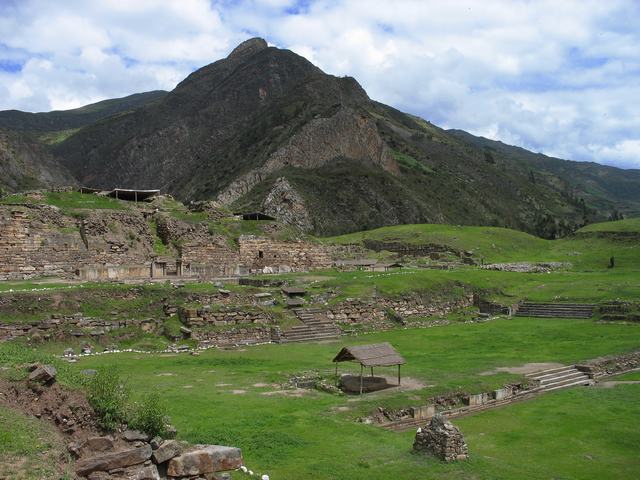 View of Chavín de Huántar Sharon odb, Wikimedia Commons
View of Chavín de Huántar Sharon odb, Wikimedia Commons
____________________________________
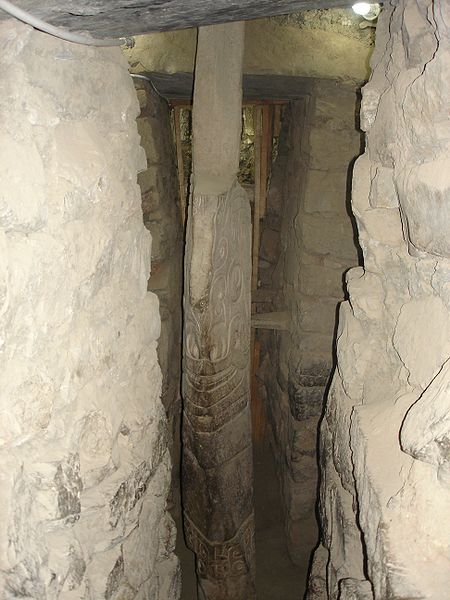 The Lanzon within its interior chamber at Chavín de Huántar Reto Luescher, Wikimedia Commons
The Lanzon within its interior chamber at Chavín de Huántar Reto Luescher, Wikimedia Commons
______________________________________
 The circular plaza at Chavín de Huántar Martin St.-Amant, Wikimedia Commons
The circular plaza at Chavín de Huántar Martin St.-Amant, Wikimedia Commons
______________________________________
So what does all of this mean? What explains these similar, yet chronologically, geographically and culturally disparate finds?
“How curious that such varied ancient structures, separated by so much time and distance, should have common features which imply sophisticated knowledge”, observes Eneix. “Did the architects of the day each make and develop their own discoveries or did they inherit a concept from some older school of learning?”
Scientists may never have the answer to that question, but the accumulating evidence suggests that there is a real story to tell about humans and their fascination with sound.
__________________________________________
Presentation: “Virtual sound images and virtual sound absorbers misinterpreted as supernatural objects,” by Stephen J. Waller, Tuesday, October 28, 2014 at the Indianapolis Mariott Downtown Hotel Marriott.
Cover Photo, Top Left: Prehistoric paintings of hoofed animals in a cave with thunderous reverberations, located in Bhimbetka, India. Courtesy S. Waller
Source: Adpated and edited from a press release of the Acoustical Society of America, with additional material added.
____________________________________________________
Travel and learn with Far Horizons.
Read about the most fascinating discoveries with a premium subscription to Popular Archaeology Magazine. Find out what Popular Archaeology Magazine is all about. AND MORE:
On the go? Get the smartphone version of Popular Archaeology as an app or as an ebook.
Popular Archaeology’s annual Discovery Edition eBook is a selection of the best stories published in Popular Archaeology Magazine in past issues, with an emphasis on some of the most significant, groundbreaking, or fascinating discoveries in the fields of archaeology and paleoanthropology and related fields. At least some of the articles have been updated or revised specifically for the Discovery edition. We can confidently say that there is no other single issue of an archaeology-related magazine, paper print or online, that contains as much major feature article content as this one. The latest issue, volume 2, has just been released. Go to the Discovery edition page for more information.




